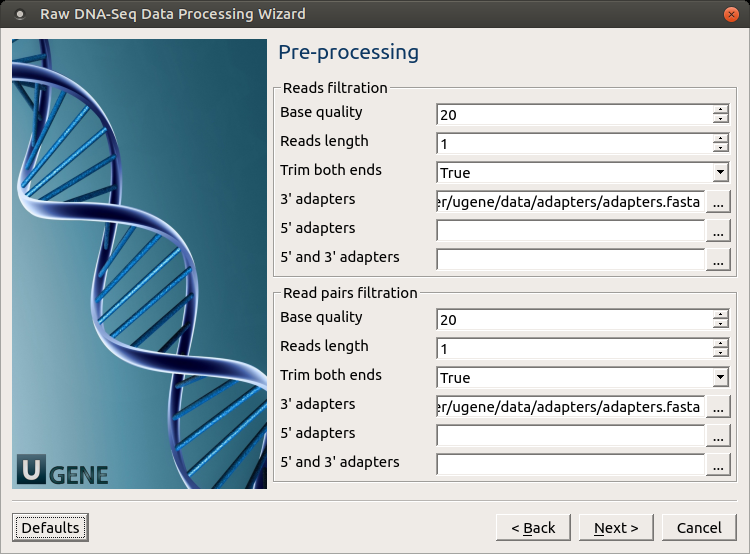Raw DNA-Seq Data Processing
Use this workflow sample to process raw DNA-seq next-generation sequencing (NGS) data from the Illumina platform. The processing includes:
- Filtration:
- Filtering of the NGS short reads by the CASAVA 1.8 header;
- Trimming of the short reads by quality;
- Mapping:
- Mapping of the short reads to the specified reference sequence (the BWA-MEM tool is used in the sample);
- Post-filtration:
- Filtering of the aligned short reads by SAMtools to remove reads with low mapping quality, unpaired/unaligned reads;
- Removal of duplicated short reads.
The resulting filtered short reads assembly is provided in the SAM format. Intermediate data files are also available in the output.
How to Use This Sample
If you haven’t used the workflow samples in UGENE before, refer to the “How to Use Sample Workflows” section of the documentation.
Workflow Sample Location
The workflow sample “Raw DNA-Seq processing” can be found in the “NGS” section of the Workflow Designer samples.
Workflow Image
Two versions of the workflow are available. The workflow for single-end reads looks as follows:
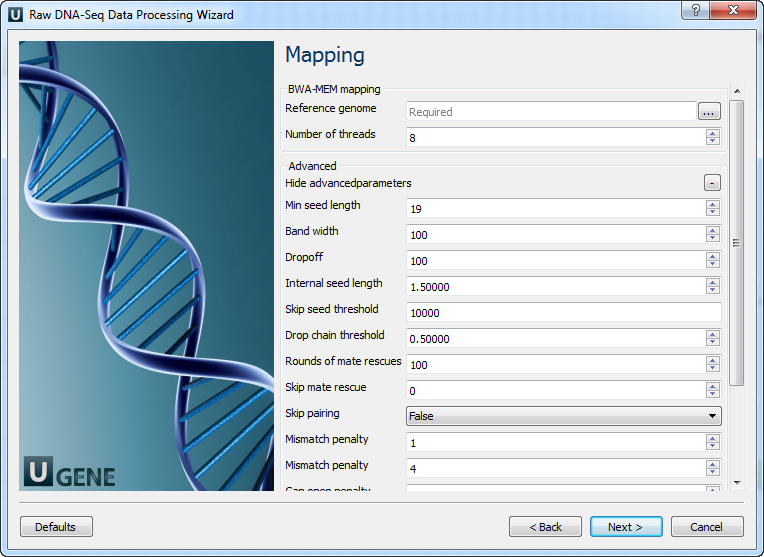
The workflow for paired-end reads appears as follows:
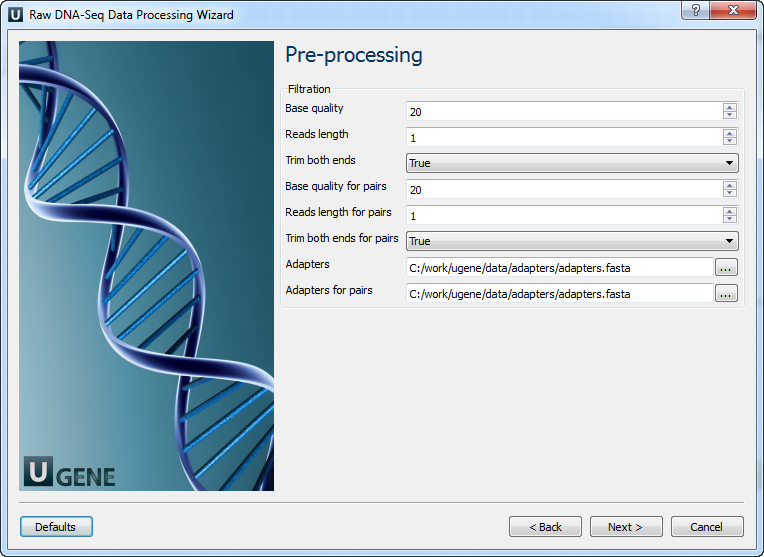
Workflow Wizard
The workflows have similar wizards. The wizard for paired-end reads has 5 pages.
Input data: On this page, you must input FASTQ file(s).
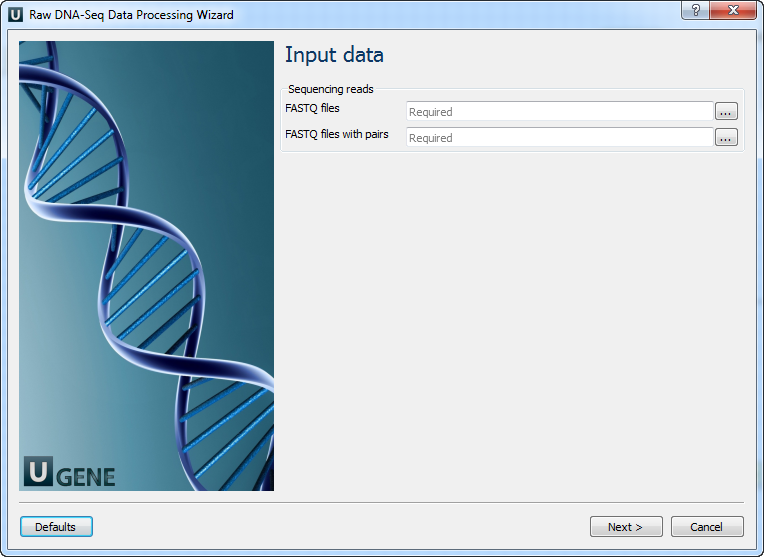
Pre-processing: On this page, you can modify filtration parameters.
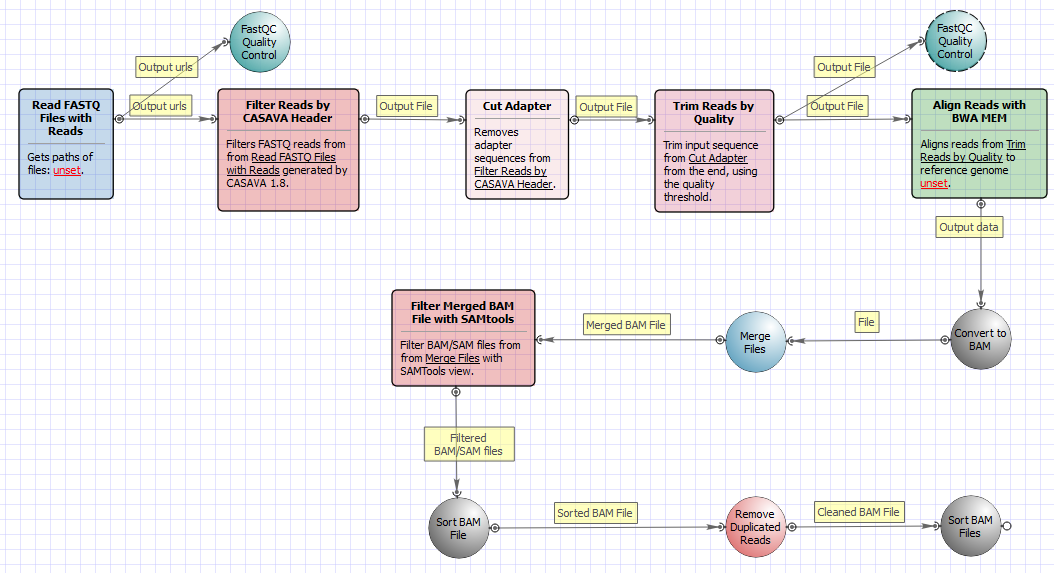
The following parameters are available for reads and read pairs filtration:
Parameter Description Base quality Quality threshold for trimming. Reads length Too short reads are discarded by the filter. Trim both ends Determines whether to trim both ends of a read. Usually, set True for Sanger sequencing and False for NGS. 3’ adapters A FASTA file with one or multiple sequences of adapters that were ligated to the 3’ end. The adapter itself and anything that follows is trimmed. 5’ adapters A FASTA file with one or multiple sequences of adapters that were ligated to the 5’ end. An anchored adapter must appear entirely at the 5’ end of the read. 5’ and 3’ adapters A FASTA file with one or multiple sequences of adapters that were ligated to the 5’ end or 3’ end. Mapping: On this page, you must input the reference and optionally modify advanced parameters.
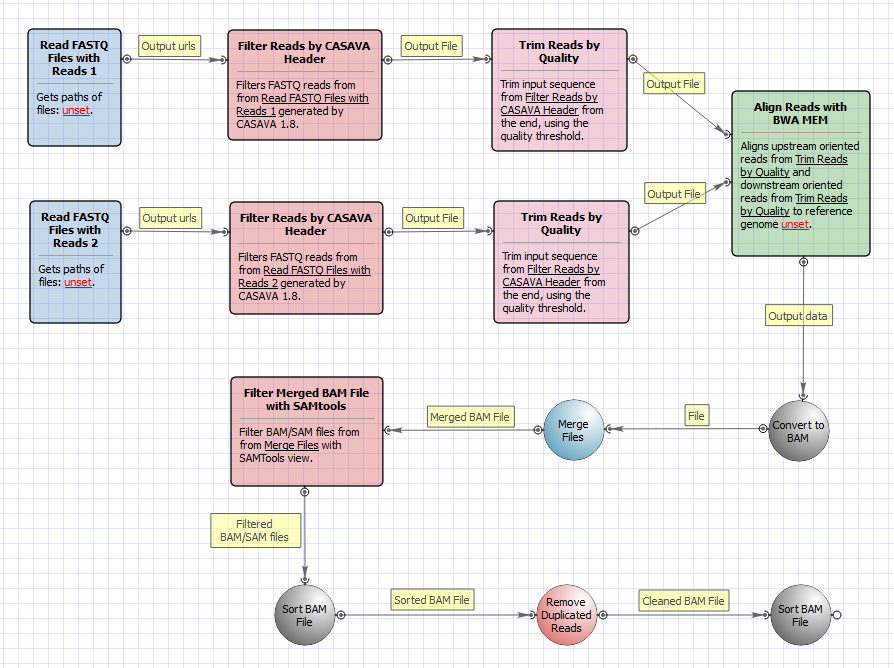
The following parameters are available:
Parameter Description Reference genome Path to indexed reference genome. Number of threads Number of threads (-t). Min seed length Path to indexed reference genome (-k). Band width Band width for banded alignment (-w). Dropoff Off-diagonal X-dropoff (-d). Internal seed length Look for internal seeds inside a seed longer than {-k} (-r). Skip seed threshold Skip seeds with more than INT occurrences (-c). Drop chain threshold Drop chains shorter than FLOAT fraction of the longest overlapping chain (-D). Rounds of mate rescues Perform at most INT rounds of mate rescues for each read (-m). Skip mate rescue Skip mate rescue (-S). Skip pairing Skip pairing; mate rescue performed unless -S is also in use (-P). Mismatch penalty Score for a sequence match (-A). Mismatch penalty Penalty for a mismatch (-B). Gap open penalty Gap open penalty (-O). Gap extension penalty Gap extension penalty; a gap of size k costs {-O} (-E). Penalty for clipping Penalty for clipping (-L). Penalty unpaired Penalty for an unpaired read pair (-U). Score threshold Minimum score to output (-T). Post-processing: On this page, you can modify post-processing parameters.
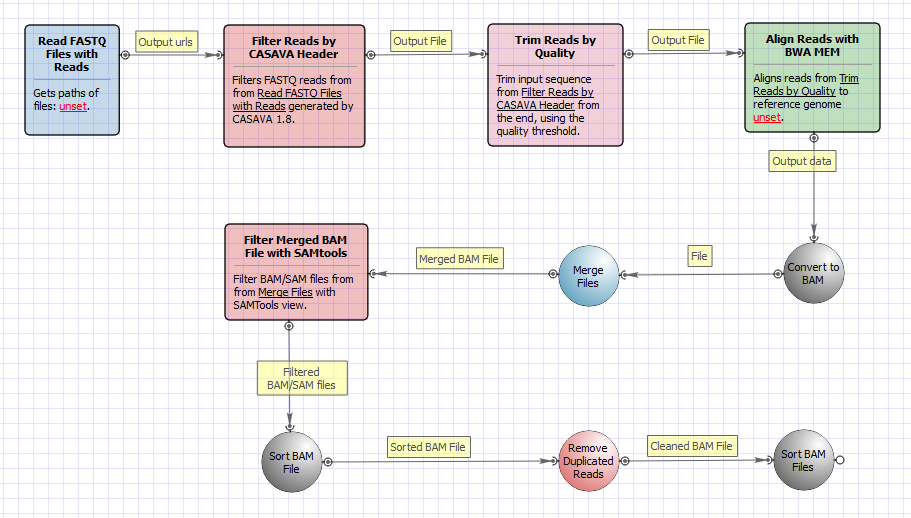
The following parameters are available:
Parameter Description MAPQ threshold Minimum MAPQ quality score. Skip flag Skip alignment with the selected items. Use the combo box to configure the bit flag. Do not select items to avoid filtration by this parameter. Region Regions to filter. For BAM output only. Use chr2 to output the whole chr2, chr2:1000 to output regions of chr2 starting from 1000, chr2:1000-2000 to output regions of chr2 between 1000 and 2000 including the endpoint. Use space separators for multiple regions (e.g., chr1 chr2 chr3:1000-2000). For single-end reads Remove duplicates for single-end reads. Output data: On this page, you must input output parameters.
